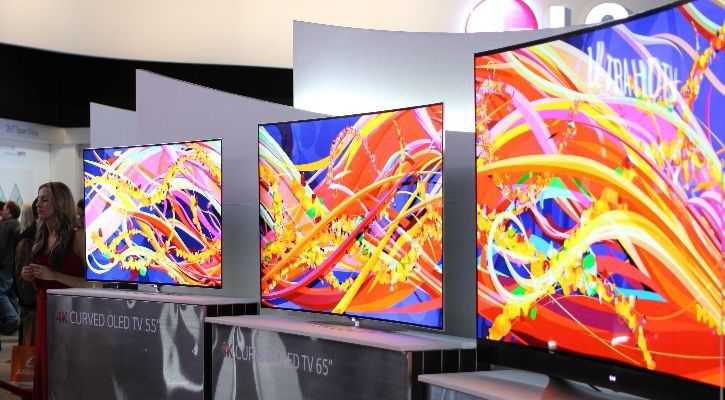Your Screen Can Only Show Three Primary Colours, But Here's How It Creates Millions More

These days we’re spoiled for choice when it comes to televisions. We have massive LED screens, smart TVs, and may even be getting displays we can roll up soon.
But just how do televisions work? We know that digital signals are converted to visuals on our screen, but what’s the process that goes on behind the display in our living rooms? Well here’s what happens.
Grandaddy CRT
In the days of CRT televisions, the idiot box was much larger, with a conspicuous rear end. The reason for that is in the name itself: CRT or Cathode Ray Tube. It’s a specialized vacuum tube which can produce a steady beam of electrons from, you guessed it, the cathode. When these electrons hit the phosphorous-coated screen of your old TV, it caused a tiny bright spot, depending on the beam’s intensity.
Inside the CRT was also a set of charged coils, arranged in a way that they could move the electron beam horizontally and vertically. When an old black-and-white TV received the video signal, encoded in that was the pattern of light to obtain the picture being sent. Then the beam’s intensity was adjusted even as the coils made it scan left to right in rows, until the bottom, lighting up each space along the way, similar to how your eyes move as you read a book. This was done so fast that instead of a series of flashes your eyes would instead see a steady picture on the screen.
Of course, when colour televisions came in, they used three different electron guns, one for each primary colour; red, green, and blue. Each followed a pattern based on the final picture needed, to produce three overlapping images in each colour. Where they combined, the you got the right colour on screen in RGB.
Ole Reliable LCD
The digital TVs you know now work a little differently. Instead of a cathode ray tube, there’s a liquid crystal display (LCD) that controls where the light hits your screen. These panels are two sheets of polarizing material with a liquid crystal solution sandwiched in between, so when an electric current passes through the crystals align to either allow the light or block it. The signal received here, instead of being analog, is comprised of binary ones and zeroes. A pixel with a value of zero means it’s off (or black), while a value of one means the on state. The LCD reads the digital signal and converts it into an on/off pattern for all the pixels on screen. By shining the primary colours in this way, each pixel can be controlled individually, making for a much sharper picture than in CRT TVs.
This is where the term "refresh rate" matters to you. Remember how the CRT monitor worked by flashing multiple images a second to make a steady picture? In the same way, the number of frames your display shows you each second is the frame rate. Traditionally, the optimal rate is about 60 fps (frames per second) but many displays go as high as 120. The higher that number, the smoother the feed is to your eyes.
LED and OLED: The Hip New Kids
Another interesting to note here is that an LED (light-emitting diode) display is technically an LCD display, it’s just a specific kind. They both have a liquid crystal panel, the difference comes in when you consider the light being used to illuminate them. Older LCD TVs used something called Cold Cathode Flourescent Lamps (CCFL) to light up the display. LED television instead use an array of LEDs, because they’re not only brighter but also more power-efficient.
